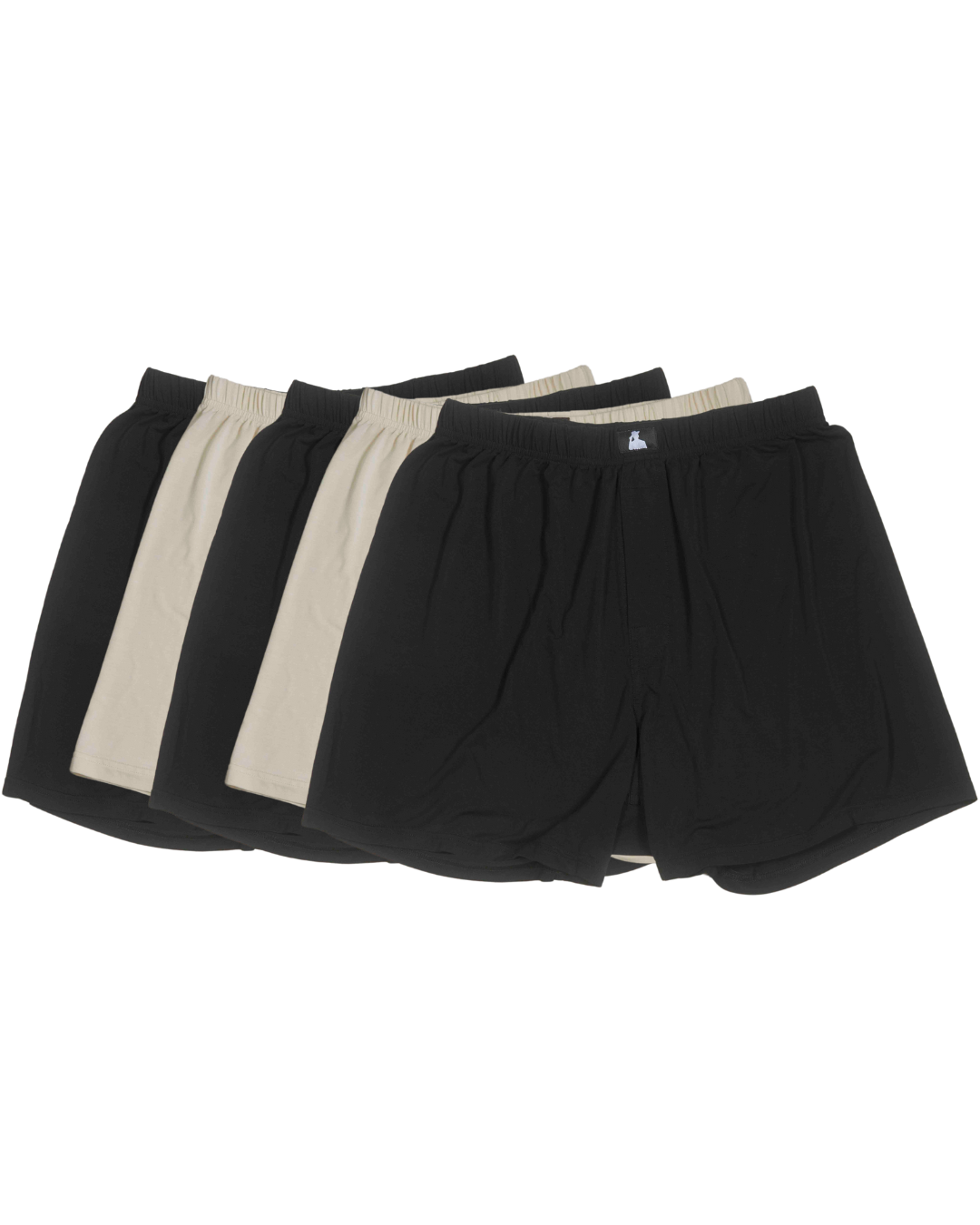Cotton, Polyester – or Bamboo?
Let’s compare common fabrics:
- Cotton: A natural fiber, cotton is usually breathable and soft. Loose cotton boxers are often recommended for fertility because they vent heat better than synthetic briefs. (In [58], tight cloth-briefs still showed higher scrotal temperature than looser cotton.) However, conventional cotton farming uses lots of pesticides and water. Non-organic cotton underwear might carry trace chemicals, although these are generally less worrisome than plasticizers in synthetics. Additionally, standard cotton holds moisture – meaning sweaty warmth can still build up in hot conditions.
- Polyester/Synthetics: These materials are durable and often cheaper, but they’re essentially plastics. Polyester underwear can trap more heat (some research in animals even linked polyester pants to reduced sperm production [4]) and may promote static or UV degradation that leaches chemicals. Many cosmetics or fabric treatments – moisture-wicking finishes, water- or stain-resistant coatings – use PFAS or BPA-like chemicals. Even if the endocrine research isn’t specific to underwear, the general warning is: petrochemical fabrics can carry endocrine disruptors and create heat stress around the testes [5][6].
- Bamboo (Lyocell): A newer player in underwear and bedding. Bamboo Lyocell is made from bamboo pulp using a closed-loop, eco-friendly process (no toxic solvents released). The result is a cellulosic fiber that feels like very soft cotton or silk. Its advantages include high moisture regain and quick-drying – it can absorb water vapor up to 20% of its weight and release it faster than wool. In plain terms: Bamboo Lyocell wicks sweat away and feels cool on the skin. It’s also naturally hypoallergenic and resists odor (some lab studies show bamboo fiber inhibits bacteria better than cotton [9]). Because it’s plant-based, Bamboo Lyocell tends to have fewer finishing chemicals than conventional fabrics, and bamboo plantations need fewer pesticides. In short, Bamboo Lyocell is both gentle on skin and gentler on the environment.
For underwear, that means Bamboo Lyocell is an ideal fertility-friendly fabric. It’s lightweight yet breathable (no bulk trapping heat), and avoids the plasticizers of synthetics. Mr. Fertyl’s Bamboo Lyocell underwear line harnesses these benefits. The fabric feels silky but wicks away moisture, keeping you cool and dry all day. Its airy fibers let air circulate around the testes, helping maintain the lower temperature sperm need [5][8]. Because it’s made in a closed-loop process, there are no harsh chemicals. In other words, you get “thin” underwear that doesn’t mean unsafe – just the opposite. It’s thin, soft, and lightweight, yet fully covers and protects you, without endocrine-disrupting additives.
By contrast, many standard underwear brands use nylon or polyester blends. Those are often processed with plasticizers or finishes that can theoretically mimic hormones. Even some “moisture-wicking” synthetics advertise water repellency that’s achieved by PFAS – known as “forever chemicals.” Over time, these residues could leach onto skin (especially when heated) [6]. Bamboo Lyocell avoids that entire class of chemicals. And unlike thick cotton, it doesn’t stay damp; it dries three times faster than wool, so bacterial growth is less likely.
In short, choosing Bamboo Lyocell underwear like Mr. Fertyl’s gives you peace of mind: thin, breathable fabric that supports fertility rather than hinders it. It feels cool to the touch, and it won’t raise scrotal temperature the way heavy, synthetic briefs might [5][8]. It’s also a sustainable choice – bamboo grows fast and the closed-loop process recaptures most solvents – making it kinder to the planet as well as to your body.


